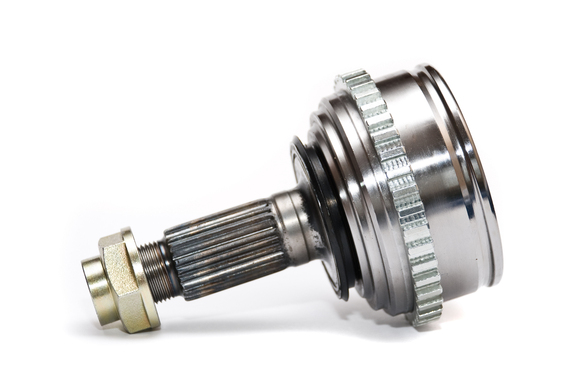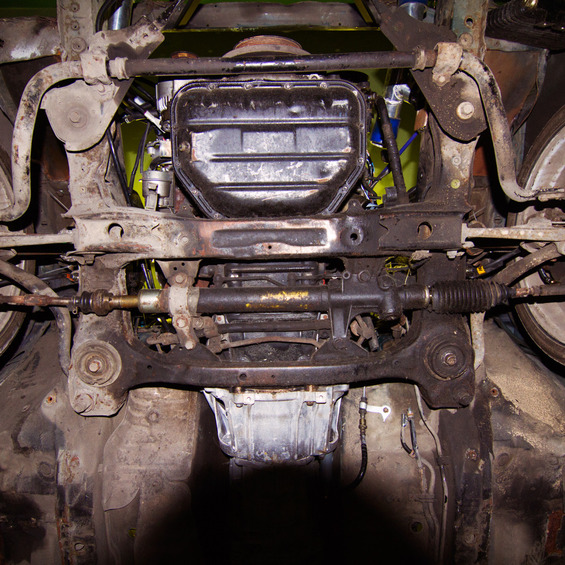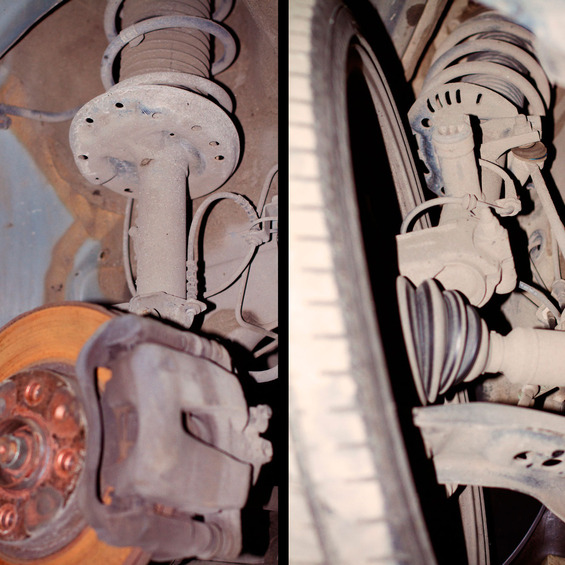
Transferable vehicles in the late 60s attracted the attention of developers of all major car companies, as the building of their bodywork permits to give maximum space in the car to the driver and passengers. In order to drive the drive to the front steered wheels, and not to deprive them of their ability to turn, they had to come up with a complicated mechanism called the SHRUs. History of the creation of the ShUzbekistan
History of the creation of the ShUzbekistan
Since the design of the joints of equal angular velocity is somewhat different, it is difficult to determine which one is the first. It is known that the Sharia type, most common in our days, appeared for the first time in the twenty years of the last century. A French inventor named Gregoire was developed by the French inventor. At the beginning of the twenty years, he patented an invention called "Tract". Another type, a mocked case, was used mainly in US automobiles of the United States of 20 years, such as the Cord L29, as well as in the transmission of the French cars "Panarm-Levassan" of the 50-60s. In our time it is used in vehicles not developing high speed, for example on tractors.

Appointment of the ShRUM
An equal angular velocity shall be used in the independent suspension of the front steering wheels, provided that they are the driving wheels. The SHU is a component part and, in addition to rotation, provides a rotation angle of up to 70 degrees, allowing it to be applied in the structure of the driving axle.
ShRUM's affinity with a hand grenade gave him a corresponding nickname, not only in Russian
The same is the case in the rear-wheel drive and 4-wheel drive vehicles, and only if the rear suspension is also applied. In this case, each of the rear wheels has a limited but not synchronized movement with the other wheel in horizontal and vertical planes, making it impossible to apply the traditional rear wheel drive axles.

If the angle between the joints is small, the joints of unequal angular speeds are easily handled by the torque transmission. With the increase in the values of these angles, the shaft begins to rotate too unevenly, making transmission work problematic and leading to a loss of power. To address such problems, there is a CHOUS. Internal and external SRU
Internal and external SRU
Generally, two different types of vehicles are used in the transmission of an overdrive vehicle, both internal and external. This design is designed to ensure greater freedom of movement of the shaft than can provide one sails. The internal sails are installed inside the gearbox and the outer layer is installed at the wheel itself.
The device and operating principle of the ShRUM
Depending on the type (sharik, triple-rise, chilli, or steam), the structure of the ShRUS may be different. However, their role in the design of the transmission is the same: the ŠRUC is included in the drive shaft. One side of the shaft is inserted in the bearing of the wheel hub and the other in the differential. Equal angular velocity joints shall pass the energy of the engine to the driving wheels through the bearings of the steps.
The two main parts of the SHRUC are the frame and the clip within it. Both of these elements have the shanky in which the marbles are located. They tightly combine both parts that have a spherical shape and transmit the rotation.
Different types of joints are used for both the outer and interior SUSS: the outer end of the drive shaft shall be fitted with balls and internal to the end of the wheel.
The outdoor angle of the working angle of the outside is wider than that of the internal one, since at the turn of the steering wheel the angle of turn of the outside of the controlled wheel can reach up to 50 degrees. The working angle of the internal ShRUM does not exceed 20 degrees. Different types of joints are therefore used for the outer and inner SHRUs: the outer end of the drive shaft shall be fitted with balls and internal to the trio.
The outer Shroux shall be constructed with a magazine mounted on the shaft, with six grovings located within radius. The body of the node has the same number of radial groves. These are the balloons that pass the torque. This transfer takes place from the shaft to the case of the SHRUU and to the hub of the wheel hub.
The ShRUs design allows the curvature but not the axis displacement. Internal ShRUs, calculated both on the bend and on the axial displacement, have a slightly different device.
Internal joints of equal angular velocity are different. This depends on the model of the car to which they are installed. For example, in the VAZ internal ShRUs of the shell are direct, not radial.
In the internal Shrruz "Tavria" the casters are installed on the three thorns of the crusaders, which revolve on the hulchat bearings. They shall be placed in the internal longitudinal areas of the shell. Thus, the joints are both curvature and the axial displacement.
The Dust of the Shute is being held in place by two homelands. They are sold in a kit with any new ShRUs
Since the ŠRUUS is located in a problem area, where there is a lot of dirt and dust, it is equipped with sealed protection. This role is performed by a flaming rubber lining, which is attached to the Schuuts.
Despite the variety of constructive decisions of the ShRUM, the principle of their work remains unchanged-the points of contact, the transmission of the district forces, must necessarily be in the bisector cavity, which passes through the bisectrix of the angle formed by the rampart.
Advantage and disadvantages of the ShRUM
The obvious advantages of the ShRUM are that the transfer using this joint loss of power, compared to other similar mechanisms, is almost non-observed. Other advantages are its lightweight, relative reliability, and ease of replacement in case of breakage.
The shortcomings of the SHRUS should be included in the design of the duster which is simultaneously a lubricant container. It is located in a place where contact with foreign objects is almost impossible to prevent. The dust can be broken, for example, by far too deep, when moving through an obstacle and a weep. As a rule, the owner of the car only finds out when the dirt has already hit the duster through a crack in the duster, causing intense wear. If you are sure that this happened recently, you can remove the sails, wash it, replace the duster and fill it with a new lubricant. If trouble has happened a long time ago, the Shruz will surely come out of service before time.







